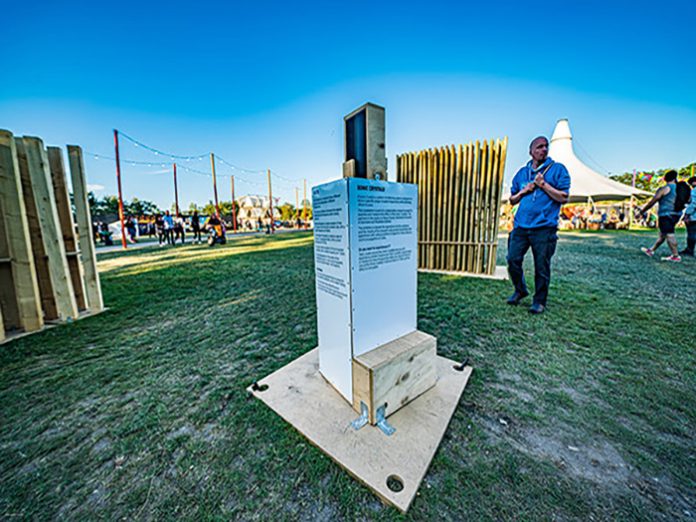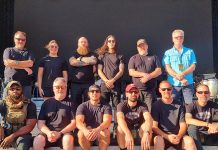Denmark’s Roskilde Festival is a broad meeting ground where music, visual arts and technology come together to form a dynamic creative community. As one example, during the 2019 event Meyer Sound partnered with the festival’s creative team and students at the Danish Technical University to design and construct an intriguing Sonic Crystals demonstration project.
Sonic Crystals are a periodic arrangement of sound-scattering objects that, depending on the size and spacing of the objects, selectively block some audio frequencies while allowing others to pass through.
“The word ‘crystal’ here just means ‘pattern’,” explained Meyer Sound Senior Scientist and Innovation Steward Roger Schwenke. “The demonstration project at Roskilde had three sonic crystals arranged around an essentially omnidirectional sound source, which in this case was a pair of back-to-back UP-4slim loudspeakers. By walking around the demonstration area, you could hear the effect of the different crystals on the music. Or you could stand behind one crystal and hear how it affected the constantly varying frequencies in the music.”
A special musical composition, entitled Falling, was commissioned by the Roskilde Festival and recorded for continuous playback at the installation. The music was composed by Peter Albrechtsen and Sun Hee Engelstoft, and in their words it presented “a sonic journey through frequencies of sound, pursuing the highs and the depths of falling.”
The low frequency crystal was formed by an 8-wide by 10-deep pattern of large wooden posts, with maximum interference at a centre frequency of 556 Hz. The medium crystal (959 Hz) was constructed with a 10 x 14 grid of cardboard tubes, while the high-frequency crystal (1700 Hz) was comprised a 20 x 8 pattern of wooden rods.
Providing the inspiration and goals of the installation were Meyer Sound’s Roger Schwenke and Roskilde Festival Project Manager Morten Büchert. The crystals were researched, designed and built by students from the Danish Technical University (DTU): Alexandros Roumpelakis, Jan Tinneberg, Jean Mai and Shanchivan Rajalingarn, all working under the guidance of DTU Head of Acoustic Technology Finn Agerkvist.
The Sonic Crystals project was much more than just an artistic and theoretical enterprise, according to Schwenke. “There’s a lot of theoretical work on this subject in the literature, and here we decided to try something small to see how practical it is, and get reactions from those who experienced it. The hope was, if you were to scale it larger, potentially it could be used to create screens that limit sound bleed between stages yet still would allow people to walk through them.”
For Roskilde Festival’s Morten Büchert, the Sonic Crystals project exemplified the unique nature of the ongoing partnership with Meyer Sound.
“Roskilde Festival is a testing ground for trying out new ideas in front of a real-time audience,” he reflected, “and the Sonic Crystals project demonstrated what we can accomplish when pooling our resources. In this case, the partnership also included the full participation of the future engineers of our audio community. Our common dedication to research and development, coupled with a strategic focus on evaluation at all levels, continues to push the boundaries of what we can achieve through this unprecedented partnership.”
Established in 2017, the unique partnership between the Roskilde Festival Group and Meyer Sound leverages the strengths of northern Europe’s largest continuing music festival and a world-leading supplier of professional audio systems. Beginning with the 2018 event, all stages at the Roskilde Festival have deployed reinforcement systems from Meyer Sound exclusively. In addition, Meyer Sound assisted in training the festival’s own technical staff in audio system design, configuration and optimisation.






